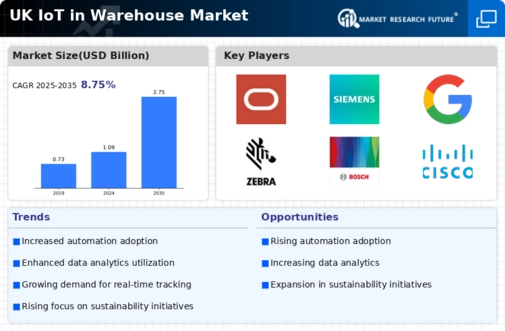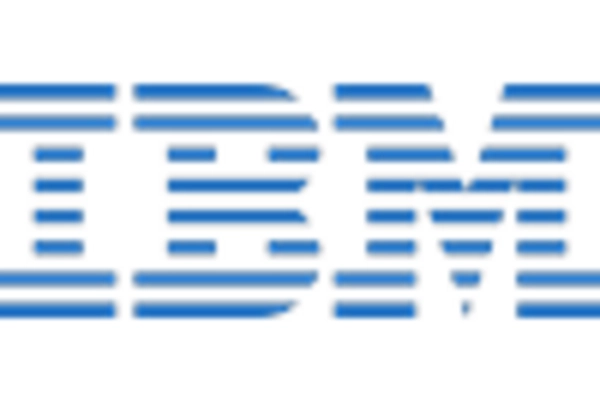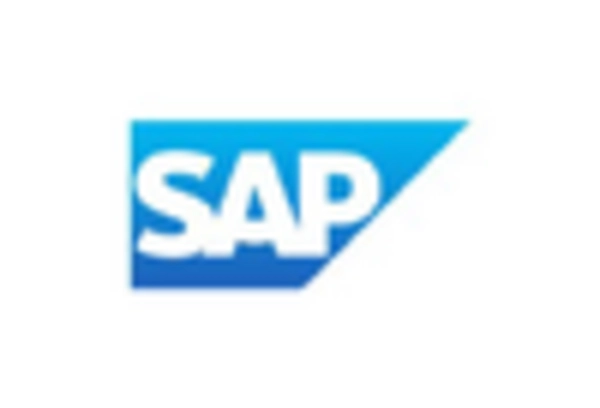Growing E-commerce Sector
The rapid expansion of the e-commerce sector is significantly influencing the iot in-warehouse market. With online shopping becoming increasingly popular in the UK, warehouses are under pressure to handle higher volumes of orders efficiently. IoT technologies enable better inventory management, order tracking, and fulfillment processes, which are essential for meeting customer expectations. Recent statistics indicate that e-commerce sales in the UK have surged, leading to a corresponding increase in warehouse automation and IoT adoption. This trend is likely to continue, driving further growth in the iot in-warehouse market as businesses strive to enhance their operational capabilities.
Rising Demand for Efficiency
The iot in-warehouse market is experiencing a notable surge in demand for operational efficiency. Companies are increasingly adopting IoT technologies to streamline their warehouse processes, reduce operational costs, and enhance productivity. According to recent data, the integration of IoT solutions can lead to efficiency improvements of up to 30%. This trend is particularly pronounced in the UK, where businesses are under pressure to optimize their supply chains. The ability to monitor inventory levels in real-time and automate various tasks is driving this demand. As a result, the IoT in-Warehouse Market is likely to see significant growth as companies seek to leverage these technologies to remain competitive.
Advancements in IoT Technology
Technological advancements are playing a crucial role in shaping the iot in-warehouse market. Innovations in sensor technology, connectivity, and data processing capabilities are enabling more sophisticated IoT applications. For instance, the development of low-power wide-area networks (LPWAN) allows for better connectivity in large warehouses, facilitating real-time data transmission. This is particularly relevant in the UK, where the logistics sector is rapidly evolving. The ability to collect and analyze vast amounts of data from various sources is enhancing decision-making processes. Consequently, the iot in-warehouse market is poised for growth as businesses adopt these advanced technologies to improve their operations.
Regulatory Compliance and Standards
Regulatory compliance is becoming a significant driver for the iot in-warehouse market. In the UK, businesses are increasingly required to adhere to stringent regulations regarding data security, environmental impact, and operational standards. IoT technologies can assist companies in meeting these compliance requirements by providing accurate data tracking and reporting capabilities. For example, IoT solutions can help monitor energy consumption and waste management, aligning with sustainability goals. As regulations continue to evolve, the demand for IoT solutions that facilitate compliance is expected to grow, thereby positively impacting the iot in-warehouse market.
Increased Focus on Supply Chain Resilience
The iot in-warehouse market is witnessing a heightened focus on supply chain resilience. Businesses are increasingly recognizing the importance of robust supply chains in mitigating risks and ensuring continuity. IoT solutions provide real-time visibility into inventory levels, shipment statuses, and potential disruptions. In the UK, where supply chain challenges have been prevalent, companies are investing in IoT technologies to enhance their resilience. This trend is expected to drive growth in the iot in-warehouse market as organizations seek to build more agile and responsive supply chains. The potential for IoT to provide actionable insights is likely to be a key factor in this transformation.

















Leave a Comment